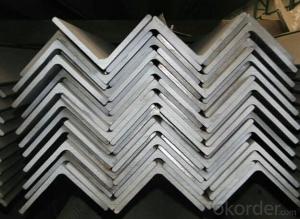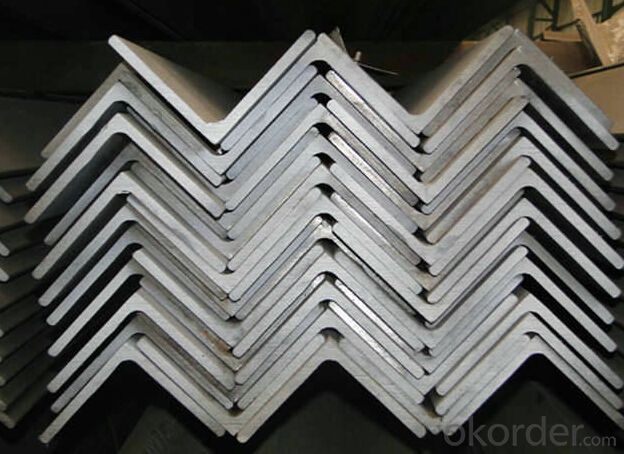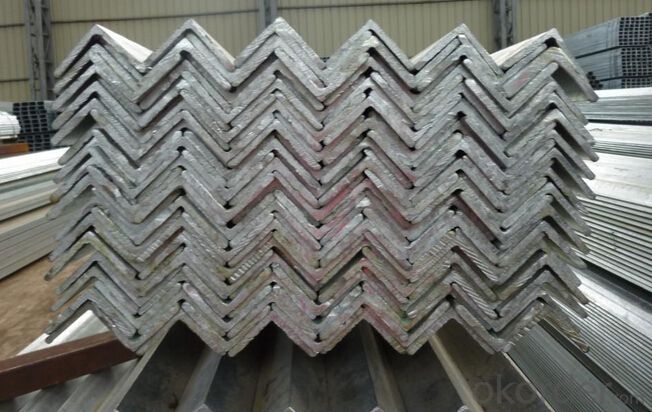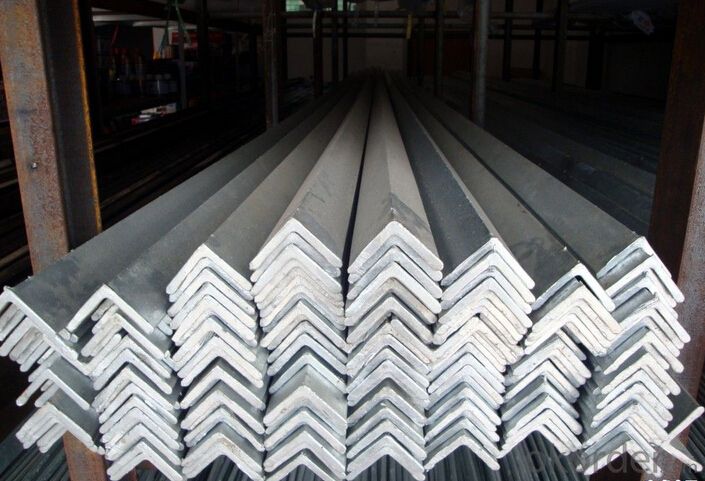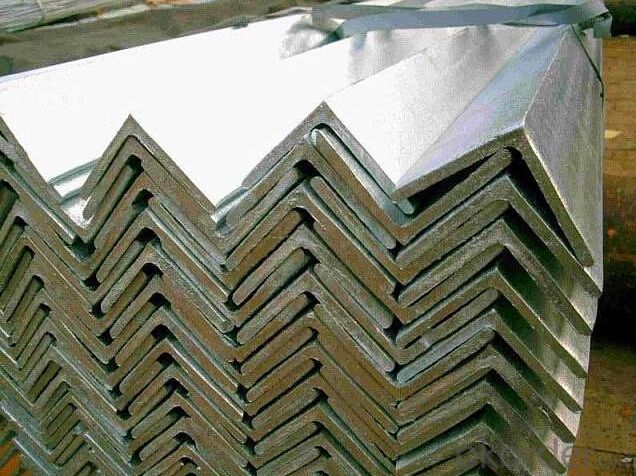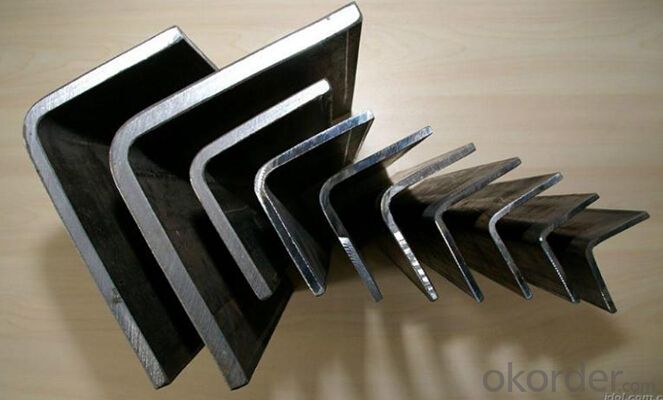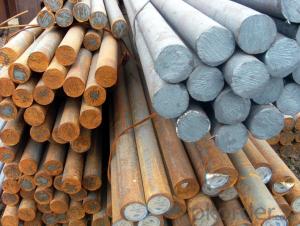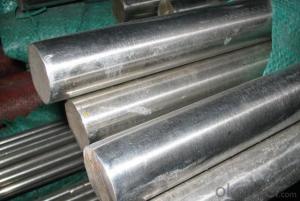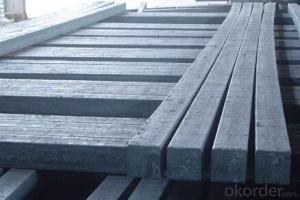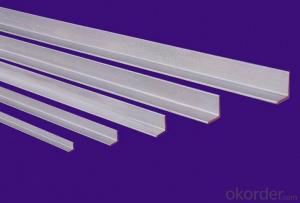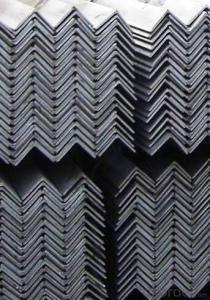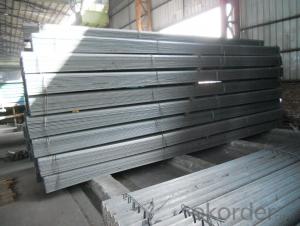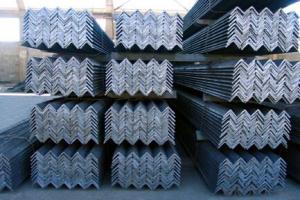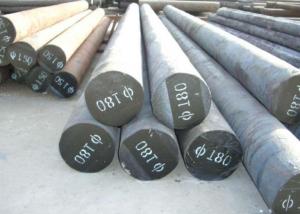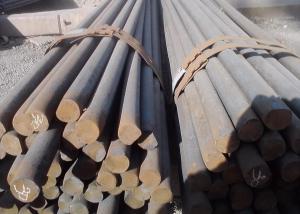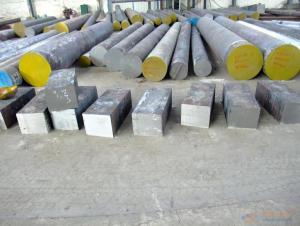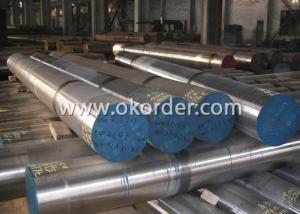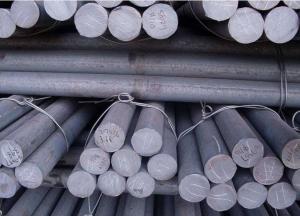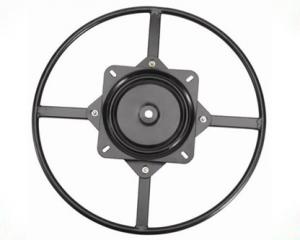Prime Steel Angle Bar with Low Price_Steel Angle Price_Angle Bar Steel
- Loading Port:
- Tianjin
- Payment Terms:
- TT OR LC
- Min Order Qty:
- 3 m.t.
- Supply Capability:
- 10000 m.t./month
OKorder Service Pledge
OKorder Financial Service
You Might Also Like
Specification
Prime Steel Angle Bar with Low Price_Steel Angle Price_Angle Bar Steel
Detailed Informaion
Name | Equal/Unequal Angle Steel Bar |
Shape | Equal/Unequal Angle |
Standard | GB/ASTM/SAE/AISI/DIN/JIS/EN/BS |
Surface Treatment: | Black/Peeling/Polished/Machined |
Delivery Condition: | Hot Rolled or Forged/Peeled or Black Surface |
Test | SGS/UT 100% Elements Testing |
Certificate: | ISO/Mill Certificate |
Service: | 24 hours online service / |
more than 20 years trading and manufacture | |
Quality Assurance: | the third party inspection, such as SGS, BV, TUV…etc. is acceptable |
Packaging Details: | Seaworthy Packaging or as per customer's packing instruction |
Specification
Description | prime steel angle bar with low price / steel angle price / angle bar steel |
Thickness | 3-24 mm |
Length | 6m,9m,12m or as required |
Standard | GB/T 9787-2008,GB/T 706-2008, JIS G3101,ASTM |
Material | Q195, Q215, Q235, Q345, SS400, A36 |
Surface treatment | Galvanized |
Equal Angle | Size: 20-200mm |
| Thickness: 3.0-24mm |
| Weight: 0.597-71.168kg/m |
| Type: 2.5*1.6-20*12.5# |
| Size:25*16-200*125mm |
Unequal | Long Side: 25-200mm |
Angle | Short Side: 16-125mm |
| Thickness: 3.0-18mm |
| Weight: 1.687-43.588kg/m |
| widely used in a variety of architectural and |
| engineering structures, such as |
Application | a.) beams, bridges, ship; |
| b.) transmission tower, reaction tower; |
| c.) lifting transportation machinery; |
| d.) industrial furnace; |
| e.)container frame, warehouse goods shelves, etc |
Chemical Composition | C<0.22% Mn: 0.30—0.65% P<0.060% S<0.060% |
Payment | TT ,L/C |
Packing | Standard seaworthy bundle packing or as required |
Delivery time | About 10-30 days, mainly according to your quantity |
Company Information
CNBM International Corporation is the most import and export platform of CNBM group(China National Building Material Group Corporation) ,which is a state-owned enterprise, ranked in 270th of Fortune Global 500 in 2015.
With its advantages, CNBM International are mainly concentrate on Cement, Glass, Iron and Steel, Ceramics industries and devotes herself for supplying high quality series of refractories as well as technical consultancies and logistics solution.
Packaging & Delivery
Packaging Detail | Sea worthy packing /as per customer's packing instruction |
Delivery Detail | 15 ~ 40 days after receiving the deposit |
Product Show
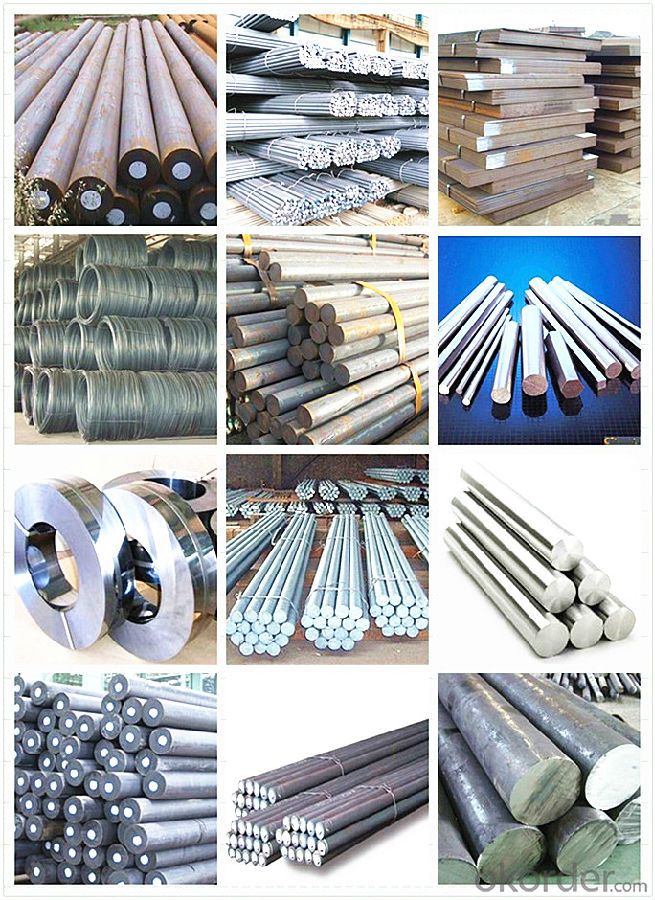
FAQ
Are you a trading company or manufacturer? | Manufacturer |
What’s the MOQ? | 3 metric ton |
What’s your delivery time? | 15-35 days after downpayment received |
Do you Accept OEM service? | Yes |
what’s your delivery terms? | FOB/CFR/CIF |
What's the Payment Terms? | 30% as deposit,70% before shipment by T/T |
Western Union acceptable for small amount. | |
L/C acceptable for large amount. | |
Scrow ,Paybal,Alipay are also ok | |
Why choose us? | Chose happens because of quality, then price, We can give you both. |
Additionally, we can also offer professional products inquiry, products knowledge train (for agents), smooth goods delivery, excellent customer solution proposals. | |
What's your available port of Shipment? | Main Port, China |
What’s your featured services? | Our service formula: good quality+ good price+ good service=customer's trust |
Where are your Market? | Covering more than 160 countries in the world |
- Q: Can special steel be used for making cutting tools?
- Yes, special steel can be used for making cutting tools. Special steel alloys, such as tool steel, are specifically designed and manufactured to possess excellent wear resistance, hardness, toughness, and high temperature stability, making them ideal for producing cutting tools. These cutting tools include saw blades, drills, milling cutters, knives, and other sharp-edged instruments used in various industries like manufacturing, construction, metalworking, woodworking, and more. The unique properties of special steel allow cutting tools to retain their sharpness, withstand high cutting forces, and perform effectively and efficiently for extended periods.
- Q: What are the different methods for improving the tensile strength of special steel?
- There exists several approaches to enhance the tensile strength of special steel. 1. Alloying: Incorporating alloying elements like chromium, nickel, molybdenum, or vanadium into the steel is a widely used technique. These elements create solid solutions within the iron matrix, augmenting the steel's strength, hardness, corrosion resistance, and wear resistance. 2. Heat treatment: Employing heat treatment is another effective means to increase the tensile strength of special steel. Processes such as quenching, tempering, and annealing are commonly employed. Quenching involves rapidly cooling the steel from a high temperature, resulting in a hardened microstructure. Subsequently, tempering reduces brittleness and enhances the steel's toughness. Conversely, annealing necessitates heating the steel to a specific temperature followed by a slow cooling process, leading to the refinement of the grain structure and improved strength. 3. Cold working: Also referred to as cold rolling or cold drawing, cold working involves subjecting the steel to plastic deformation at low temperatures. This procedure elevates the dislocation density in the steel, resulting in strain hardening and improved strength. Cold working significantly enhances the tensile strength of special steel. 4. Grain refinement: Improving the grain structure of the steel can also enhance its tensile strength. This can be achieved through processes like recrystallization annealing, where the steel is heated to a specific temperature and gradually cooled to promote the formation of smaller and more uniform grains. Smaller grain size contributes to increased strength and improved mechanical properties. 5. Shot peening: Shot peening entails bombarding the steel's surface with tiny metallic or ceramic particles. This technique induces compressive stresses in the surface layer of the steel, inhibiting crack initiation and propagation. Ultimately, shot peening improves the steel's tensile strength and fatigue resistance. It is crucial to consider that the selection of the method to enhance tensile strength depends on the specific application and requirements of the special steel. Various combinations of these methods can be employed to achieve the desired mechanical properties.
- Q: How does special steel perform in cryogenic creep resistance?
- Special steels are known for their excellent cryogenic creep resistance. They exhibit minimal deformation and maintain their mechanical properties even at extremely low temperatures. This makes them highly suitable for applications in cryogenic environments where materials are subjected to significant stress over prolonged periods.
- Q: What are the different methods of preventing intergranular corrosion in special steel?
- Various techniques are available for preventing intergranular corrosion in special steel. 1. Heat Treatment: A highly effective approach involves subjecting the steel to solution annealing, a heat treatment process. This method entails heating the steel to a high temperature and rapidly cooling it. By doing so, any precipitates or carbides that may have formed along the grain boundaries are dissolved, thereby reducing the risk of intergranular corrosion. 2. Alloying: Another strategy is to introduce specific alloying elements into the steel composition. For instance, the addition of elements such as chromium and molybdenum can enhance the steel's resistance to intergranular corrosion. These alloying elements create a protective oxide layer on the surface, preventing corrosion along the grain boundaries. 3. Passivation: Passivation involves treating the steel surface with chemicals that establish a protective layer. This layer acts as a barrier, safeguarding the grain boundaries from the corrosive environment. Common passivation techniques include acid pickling and electrochemical methods. 4. Sensitization Control: Particular attention must be given to controlling the sensitization process. Sensitization occurs when the steel is exposed to high temperatures for an extended period, resulting in the precipitation of chromium carbides along the grain boundaries and rendering the steel vulnerable to intergranular corrosion. By carefully controlling the heating and cooling rates during processing, sensitization can be minimized or prevented. 5. Corrosion Inhibitors: Another option is the utilization of corrosion inhibitors, which are chemicals that can be applied to the steel surface to protect it from corrosion. These inhibitors form a protective film on the surface, preventing corrosive agents from attacking the grain boundaries. It is important to consider that the choice of method depends on the specific type of special steel and its intended application. Selecting the most suitable approach requires a comprehensive understanding of the steel's composition, processing conditions, and the expected corrosive environment.
- Q: What are the different methods for improving the electrical conductivity of special steel?
- There are several methods for improving the electrical conductivity of special steel, including alloying, heat treatment, and surface modifications. Alloying involves adding elements like copper, nickel, or silver to the steel to enhance its conductivity. Heat treatment processes such as annealing or quenching can also improve conductivity by altering the microstructure of the steel. Additionally, surface modifications like electroplating or coating can be employed to enhance electrical conductivity.
- Q: How does special steel compare to other materials?
- Special steel, known as alloy steel as well, possesses outstanding strength, durability, and resistance to wear and corrosion. When compared to regular steel, aluminum, and plastic, special steel stands out due to its superior mechanical properties. To begin with, special steel offers higher tensile strength and hardness, making it perfect for applications that require heavy-duty performance. Its ability to withstand high pressures and temperatures, as well as resistance to deformation, make it suitable for industries like aerospace, automotive, and construction. Furthermore, special steel has excellent wear resistance, making it suitable for applications that endure friction, abrasion, and impact. This characteristic reduces the need for frequent repairs or replacements, resulting in cost savings and improved efficiency. When it comes to corrosion resistance, special steel surpasses regular steel, which tends to rust when exposed to moisture or aggressive environments. The presence of elements like chromium, nickel, and molybdenum in its composition creates a protective layer on the surface, preventing corrosion and extending the lifespan of the material. Compared to materials like aluminum and plastic, special steel has the advantage of being more robust and less prone to deformation or breakage. While aluminum is lightweight, it lacks the strength and hardness of special steel, limiting its suitability for heavy-duty applications. On the other hand, plastic offers lower strength and durability compared to special steel, making it less appropriate for demanding tasks. Moreover, special steel can be easily machined, fabricated, and welded, allowing for versatile applications across various industries. Its flexibility in terms of shaping and forming makes it the preferred choice in the manufacturing of components and structures. In conclusion, special steel outperforms other materials in terms of strength, durability, wear resistance, corrosion resistance, and versatility. Its exceptional properties make it an essential material in demanding industries where reliability and performance are of utmost importance.
- Q: How does the hardness of special steel affect its performance?
- The performance of special steel is heavily influenced by its hardness, which is determined by its ability to resist indentation, scratching, or deformation. This property is directly linked to the steel's microstructure and carbon content. When special steel is hardened, it goes through a heat treatment process, which typically involves rapid cooling or quenching after being heated to high temperatures. This process alters the steel's microstructure, resulting in a harder material. The increased hardness brings several advantages to the performance of special steel. Firstly, a higher level of hardness enhances the wear resistance of special steel. This is particularly important in applications where the steel is exposed to abrasive or erosive forces, such as cutting tools or machinery components. A harder steel can endure these forces without significant wear or damage, leading to improved longevity and reliability. Secondly, the hardness of special steel affects its strength and toughness. A harder steel generally exhibits higher strength, enabling it to withstand greater forces without permanent deformation or failure. This property is beneficial in applications where the steel faces heavy loads or impacts. Additionally, a certain level of toughness is necessary to prevent brittle fractures. While high hardness can make a steel more brittle, careful heat treatment can strike a balance between hardness and toughness, ensuring the steel remains strong and resistant to fracture. Furthermore, the hardness of special steel also influences its machinability. Hardened steel can be more difficult to machine due to its increased resistance to cutting tools. However, it offers greater dimensional stability and precision during machining operations, resulting in more accurate and consistent results. In conclusion, the hardness of special steel has a significant impact on its performance. A higher level of hardness provides improved wear resistance, strength, and toughness, making it suitable for demanding applications. However, it is crucial to carefully consider the balance between hardness and toughness to avoid brittleness. Therefore, understanding and controlling the hardness of special steel is essential for optimizing its performance in various industries.
- Q: How does special steel perform in high-temperature creep resistance?
- Special steel has excellent performance in high-temperature creep resistance. It is specifically designed to withstand prolonged exposure to elevated temperatures without undergoing excessive deformation. This is achieved through the addition of alloying elements and a careful heat treatment process, which help to enhance the steel's strength, stability, and resistance to creep. Special steel's superior creep resistance makes it a reliable choice for applications that involve high temperatures and long-term stress, ensuring the structural integrity and durability of the material.
- Q: How is special steel used in the production of springs?
- Special steel is used in the production of springs due to its excellent mechanical properties. It provides the necessary strength, durability, and elasticity required for springs to function effectively. The unique composition and heat treatment of special steel enable springs to withstand high levels of stress and repetitive loading, ensuring their longevity and reliability in various applications such as automotive, aerospace, and machinery industries.
- Q: What are the recycling options for special steel?
- There are several recycling options available for special steel. One option is to take it to a local scrap yard or metal recycling facility. These facilities have the necessary equipment to process and recycle special steel. They will typically pay you for the steel based on its weight and current market value. Another option is to contact a specialized recycling company that deals specifically with special steel. These companies have expertise in handling and recycling this type of steel and can ensure that it is properly processed and reused. Additionally, some steel manufacturers and distributors have their own recycling programs in place. They may offer take-back programs where they will collect and recycle special steel from their customers. This can be a convenient option as it eliminates the need to find a separate recycling facility. It is important to note that special steel may require special handling and processing due to its unique properties. Therefore, it is recommended to consult with a professional or contact the recycling facility or company beforehand to ensure that they can properly handle and recycle the specific type of special steel you have.
Send your message to us
Prime Steel Angle Bar with Low Price_Steel Angle Price_Angle Bar Steel
- Loading Port:
- Tianjin
- Payment Terms:
- TT OR LC
- Min Order Qty:
- 3 m.t.
- Supply Capability:
- 10000 m.t./month
OKorder Service Pledge
OKorder Financial Service
Similar products
Hot products
Hot Searches
Related keywords
